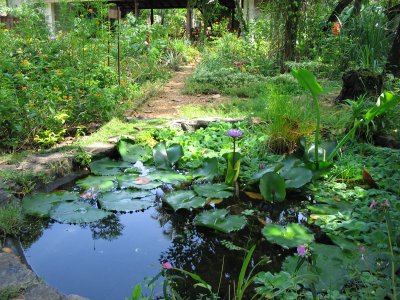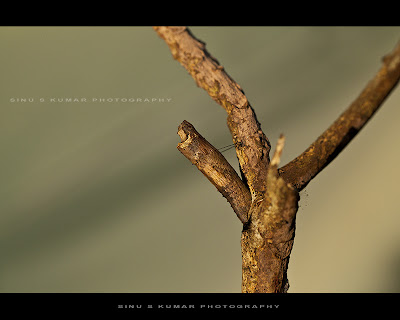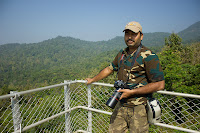Scientific Name :- Graphium doson C & R Felder
Common Jay is a butterfly with a wingspan of 70 - 80 mm. This is a black butterfly with a pale blue, semi - transparent central band that is formed by large spots. There is a marginal series of smaller spots. The underside of the wings is brown, with markings similar to the upperside, but they are whitish. The sexes look alike.
The Common Bluebottle is brighter blue and lacks the series of marginal spots present in the Common Jay.
Status, Distribution and Habitat
The Common Jay is common in the thick, riparian, moist deciduous, semi-evergreen and evergreen forests. It inhabits primary as well as secondary forests, sometimes venturing into forest plantations and orchards situated in the midst of forests. It particularly frequents forest streams and rivers. It is active throughout the year, but more so in the summer. It is distributed at lower elevations in the Sri Lankan and southern Indian forests, including suitable localities in the Eastern Ghats and Satpuras. It extends to bengal and Assam in the east, the himalayan foothills to the north and then throughout southeast Asia.
Habits
This butterfly is active throughout the day, and constantly on the move, so it is difficult to see it settled down. It has a swift and straight flight and avoids no vegetation layer. Its thorax is strong, so it rapidly beats its wings, not fully lowering them in each beat. It can easily travel between the ground and the canopy of the 40 m tall evergreen forests. The resources of the adults are distributed throughout this vertical range. They range from the mud-puddling sites of the males at the forest streams to large shrubs such as Leea, to medium-sized treees such as cinnamomum and large canopy trees. While feeding from flowers, it keeps its wings vibrating, never fully settling on the flowers.
The males gather at mud-puddling sites and usually form their own species assemblages or join other swallowtail butterflies. The group is a very tight one, so the members push against each other in an effort to shift to spots in the surrounding of their original positions. Before retiring in the evening, the butterfly spends a prolonged period investigating and hovering to choose a particular branch to sleep. At rest the wings are closed over the back, but the hind wings do not cover the fore wings.
Reproduction
The egg-laying behaviour is very similar to that of the Tailed Jay. The habits and host plants of the caterpillar and place of pupation are also similar.
The egg is spherical and pale yellow. The young larva lacks the yellowish markings present on the back of the Tailed Jay. and the white line above the prolegs is broader. The grown caterpillar has two forms, It is either dark brown or grassy green, with spines on the 4th segment short, conical and blue centred. They are surrounded by broad lemon-yellow rings which, in turn are surrounded by thin black rings. The osmererium is pale bluish-green and extruded only reluctantly.
The pupa is pale green with a dark purplish median line from the head to the thoracic horn and a yellow line from the tip of the horn to the cremaster.
Larval Host Plants.
The caterpillars feed on Annona lawii, Cinnamomum macrocarpum, Magnolia grandiflora, Michelia champaca, Miliusa tomentosum and Polyalthia longifolia ( Annonaceae, Lauraceae, Magnoliaceae).
Common Jay is a butterfly with a wingspan of 70 - 80 mm. This is a black butterfly with a pale blue, semi - transparent central band that is formed by large spots. There is a marginal series of smaller spots. The underside of the wings is brown, with markings similar to the upperside, but they are whitish. The sexes look alike.
The Common Bluebottle is brighter blue and lacks the series of marginal spots present in the Common Jay.
Status, Distribution and Habitat
The Common Jay is common in the thick, riparian, moist deciduous, semi-evergreen and evergreen forests. It inhabits primary as well as secondary forests, sometimes venturing into forest plantations and orchards situated in the midst of forests. It particularly frequents forest streams and rivers. It is active throughout the year, but more so in the summer. It is distributed at lower elevations in the Sri Lankan and southern Indian forests, including suitable localities in the Eastern Ghats and Satpuras. It extends to bengal and Assam in the east, the himalayan foothills to the north and then throughout southeast Asia.
Habits
This butterfly is active throughout the day, and constantly on the move, so it is difficult to see it settled down. It has a swift and straight flight and avoids no vegetation layer. Its thorax is strong, so it rapidly beats its wings, not fully lowering them in each beat. It can easily travel between the ground and the canopy of the 40 m tall evergreen forests. The resources of the adults are distributed throughout this vertical range. They range from the mud-puddling sites of the males at the forest streams to large shrubs such as Leea, to medium-sized treees such as cinnamomum and large canopy trees. While feeding from flowers, it keeps its wings vibrating, never fully settling on the flowers.
The males gather at mud-puddling sites and usually form their own species assemblages or join other swallowtail butterflies. The group is a very tight one, so the members push against each other in an effort to shift to spots in the surrounding of their original positions. Before retiring in the evening, the butterfly spends a prolonged period investigating and hovering to choose a particular branch to sleep. At rest the wings are closed over the back, but the hind wings do not cover the fore wings.
Reproduction
The egg-laying behaviour is very similar to that of the Tailed Jay. The habits and host plants of the caterpillar and place of pupation are also similar.
The egg is spherical and pale yellow. The young larva lacks the yellowish markings present on the back of the Tailed Jay. and the white line above the prolegs is broader. The grown caterpillar has two forms, It is either dark brown or grassy green, with spines on the 4th segment short, conical and blue centred. They are surrounded by broad lemon-yellow rings which, in turn are surrounded by thin black rings. The osmererium is pale bluish-green and extruded only reluctantly.
The pupa is pale green with a dark purplish median line from the head to the thoracic horn and a yellow line from the tip of the horn to the cremaster.
Larval Host Plants.
The caterpillars feed on Annona lawii, Cinnamomum macrocarpum, Magnolia grandiflora, Michelia champaca, Miliusa tomentosum and Polyalthia longifolia ( Annonaceae, Lauraceae, Magnoliaceae).
























